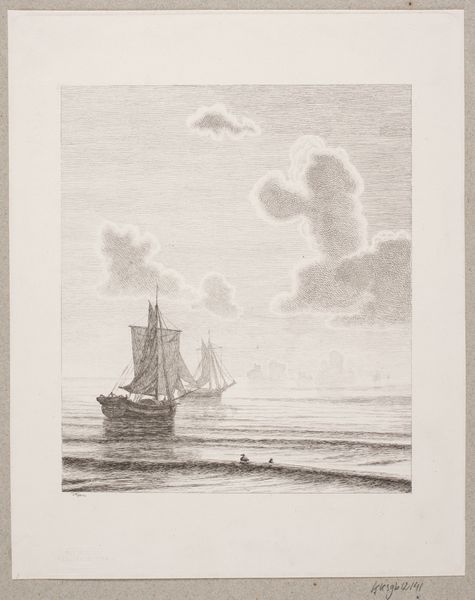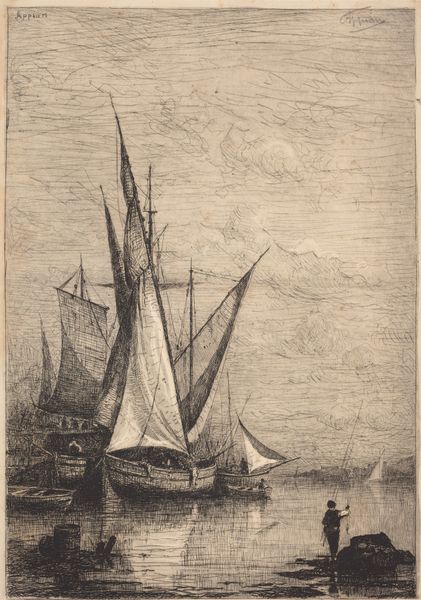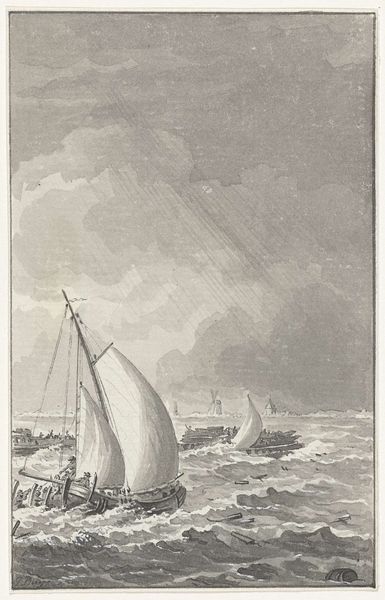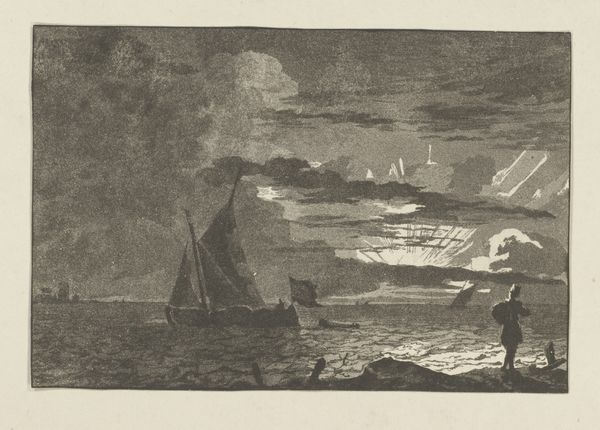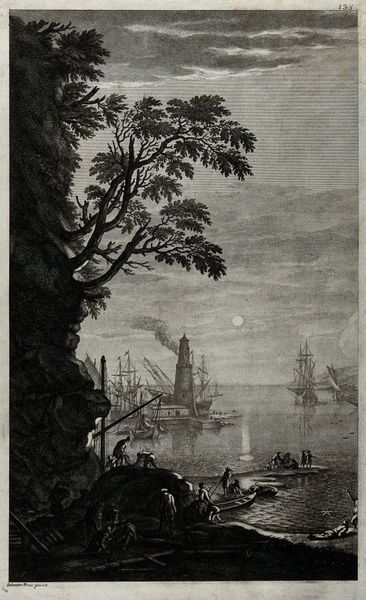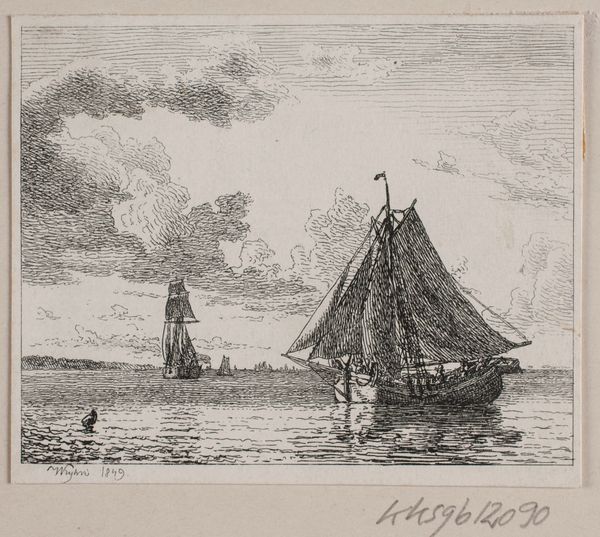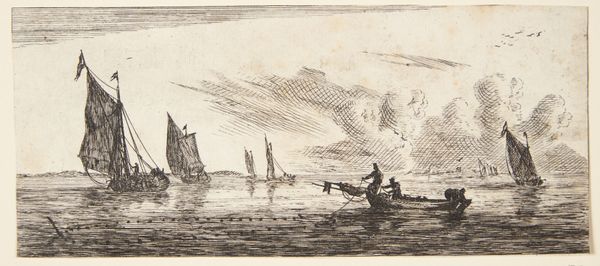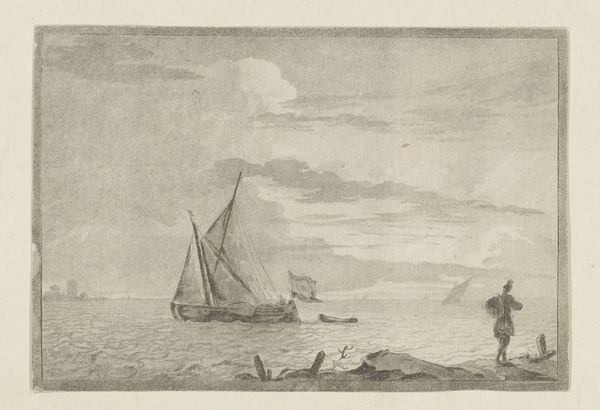
print, engraving
# print
#
landscape
#
cityscape
#
engraving
#
realism
Dimensions: 315 mm (height) x 232 mm (width) (billedmaal)
Curator: Standing before us is André Bork's "Udsigt fra Strandpromenaden," or "View from the Promenade," an engraving dating back to 1886. Editor: The mood strikes me as somewhat melancholy. The solitary figure by the water’s edge… a study in loneliness, perhaps? Curator: That sense of solitude is certainly palpable. Consider the burgeoning industrialization of the era, reflected in the steam-powered vessel on the water. How does this contrast with the individual's reflective posture on the shore? The societal shifts wrought by technological advancement frequently left many feeling displaced and isolated. Editor: Absolutely, and Bork’s composition emphasizes that. The contrast of the natural elements—the expansive sky, the water—with the mechanical intrusion of the steamship creates a strong visual symbol for the anxieties of the time. It represents not only the physical changes to the landscape but the psychological impact on people like the figure represented in the print. It pulls me back to works like "The Wanderer Above the Sea of Fog" but less grand, more human in scale. Curator: Precisely. The symbols deployed, and specifically their juxtaposition, allows us to look into anxieties surrounding labor, the environment, and class. Furthermore, representations of women during the late 19th century must be interpreted through a feminist lens. Here, the female figure positioned on the periphery evokes the restricted agency afforded to women amidst a rapidly transforming social landscape. What is the relationship between their representation and how that era treated the roles of women? Editor: It speaks to broader cultural narratives of constraint, a feeling of being hemmed in despite progress. The light here creates an atmospheric dreamscape even though we're viewing reality. You make a good point as well, and the way she is dressed places her perhaps as middle class who benefits, but in her own solitude, there are contradictions presented in her representation as part of that social class at the time. Curator: I'm interested in the discourse created between representation and lived experiences during this specific period. Bork invites a discussion about the consequences of unchecked industrial expansion on social fabrics and lived experiences, something still worth discussing today. Editor: A worthy discussion, to be sure, and viewing the symbology within a familiar landscape helps us find unique entry points to engage it. Thank you.
Comments
No comments
Be the first to comment and join the conversation on the ultimate creative platform.

